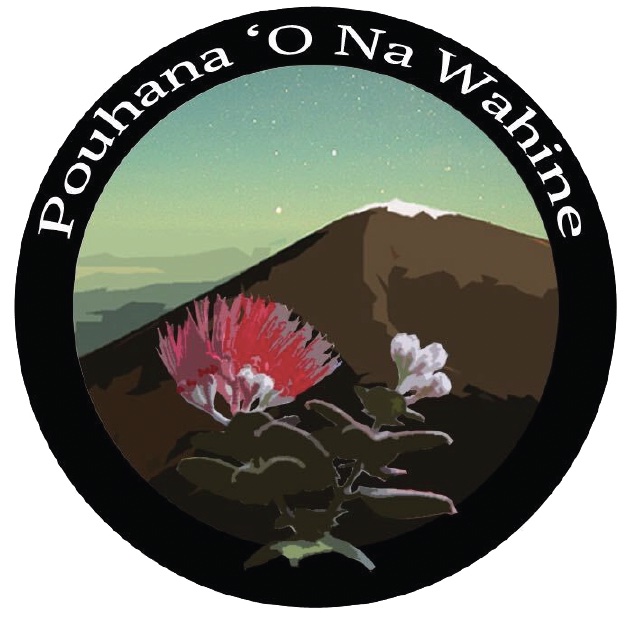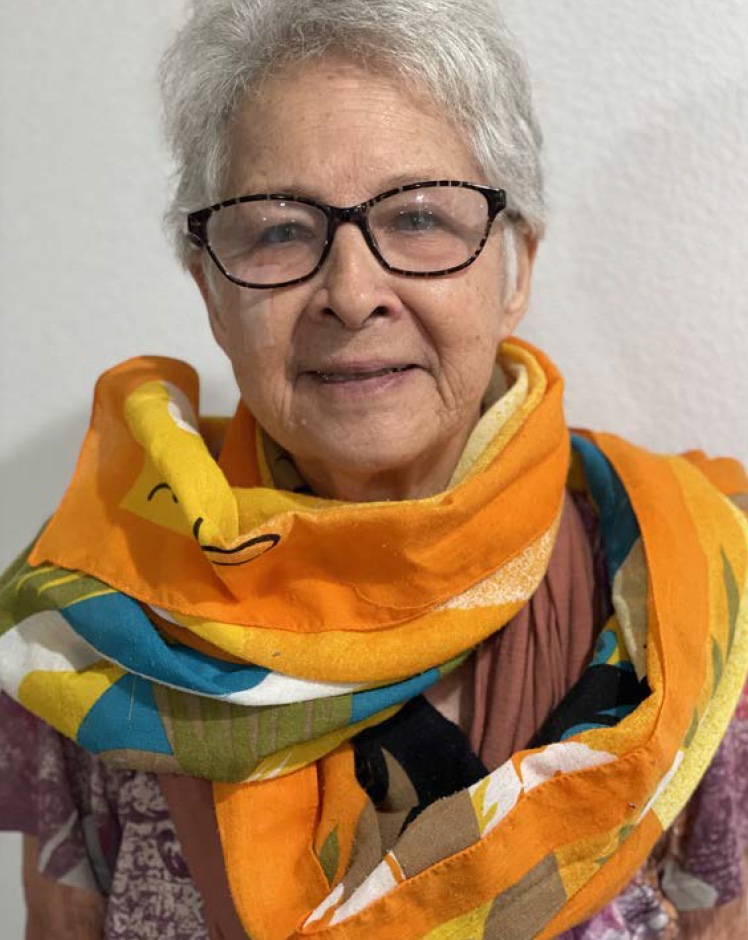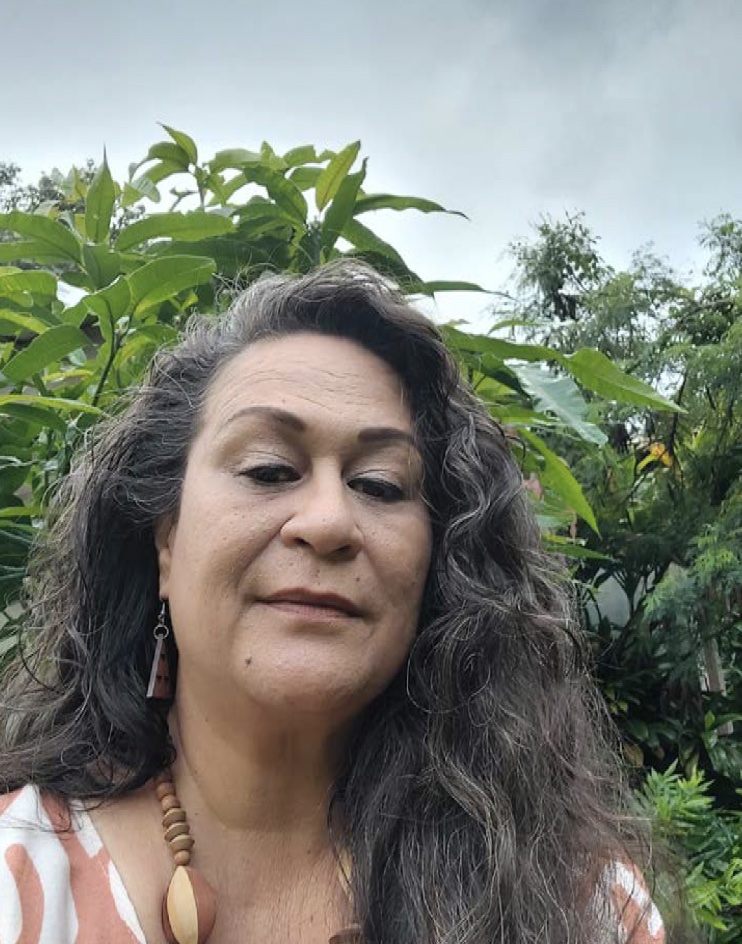Pouhana ‘O Nā Wahine - Na Leo Mana

Nā Leo Mana: The Safety of Native Hawaiian Women Requires Recognition of and Resources to Support Their Indigenous Way of Life Based on Respect
Ten years after the Violence Against Women Act (VAWA) became law in 1995, survivors, Indian Tribes, and Tribal advocates worked with federal lawmakers to draft and add a new title—Title IX. Safety for Indian Women. It passed in 2005 with the purpose of addressing the federal government’s trust responsibility and unique government-to-government relationship with federally recognized Indian Tribes to safeguard the lives of American Indian women.
Native Hawaiians are not an Indian Tribe. We are the Indigenous people of the Hawaiian Islands with a unique legal relationship to the United States that overthrew our government. In the context of VAWA, we recognize the United States has a specific responsibility to assist our people in safeguarding the lives of Native Hawaiian women. The question is how will it fulfill this responsibility.
There is no agreement among Native Hawaiians in response to the federal government’s offer of federal recognition of one Native Hawaiian government which interacts on a government-to-government basis with the U.S. What is commonly recognized on the other hand, is the continued importance of the United States recognizing and fulfilling its responsibilities to Native Hawaiian people.
Indigenous Native Hawaiian Based Solutions to Restore Safety
The Pouhana ʻO Nā Wahine is calling for support of a Native Hawaiian Resource Center to increase awareness of the disproportionate violence committed against Native Hawaiian women and the urgent need for Indigenous solutions to understanding and ending such violence. Like other Indigenous peoples, Native Hawaiian culture is based on respect for all things—the land, waters, family, and clearly women.
Given the unique trust responsibility of the federal government to Native Hawaiians, we believe it is essential to amend VAWA to include a Native Hawaiian title. This title should specifically meet the unique needs of Native Hawaiians distinct from Indian Tribes and apart from culturally specific communities. While Native Hawaiians should continue to be included in culturally specific programming, their unique history, legal and political relationship with the federal government, and Indigeous worldview must be honored. This requires a separate title specifically for Native Hawaiians as the Indigenous people of the Hawaiian Islands.
“The barriers confronting Native Hawaiian women are specific to our historical experience as colonized people that developed as the Hawaiian islands and natural resources were forcibly taken creating living conditions where Hawaiian women are vulnerable to violence.” –Rosemond Pettigrew, Pouhana ʻO Nā Wahine
The process of healing is part of the Native Hawaiian concept of ho’oponopono, which means to make things right. The abuse has been carrying on through at least four generations. You need to regain who you are and where you come from to heal. Connecting and accepting who you are and where you came from is important for healing because you’re not only healing your present self, but you’re healing your past self. You’re healing your kupuna who have suffered as a result of just being Indigenous or Native Hawaiian. So you have to go back to who you are, where you came from, identify your family, and address it.
In this way, the Pouhana ʻO Nā Wahine are healing more than just the trauma of current-day survivors––we are healing the pain that Native Hawaiians have endured since the 1800s when colonization began. This healing process is uniquely Hawaiian, addressing domestic and sexual violence in a way that empowers survivors to reclaim their identities through Native Hawaiian culture and values.
The sisters of the Pouhana ʻO Nā Wahine understand that for Native Hawaiian women, true healing can only occur when a woman’s identity—her family, land, ancestors, culture, and history—is fully embraced as part of herself. When you connect to your family, or your ohana, and you start to know who you are and what your place is as an Indigenous woman, then you can see that this is who I am, and this is who I’m proud to be.
Much more work, including Reconciliation, must happen among Native Hawaiians to heal from the trauma of the U.S.’s Overthrow in 1893 of our queen and government. We have worked closely with our sister organizations, including the National Indigenous Women’s Resource Center (NIWRC), the Alaska Native Women’s Resource Center (AKNWRC), and the Indian Law Resource Center to understand our commonalities as Indigenous peoples, as well as our distinctions. We look forward to working with lawmakers to identify how best to address the needs of Native Hawaiian women and all victims of domestic and sexual violence.
Our grassroots organizing is an Indigenous approach allowing local problem solving (hoʻoponopono). These discussions in Native Hawaiian communities can develop a road map in response to domestic and sexual violence and how best to increase the safety of Native Hawaiian women.
Removal of Systemic Barriers Require Action
Traditionally, Indigenous women were respected and held sacred within their nations. Colonization eroded this status and dehumanized Indigenous women, destroying original protections within our nations. The current spectrum of violence against Indigenous women is intertwined with systemic barriers embedded within the U.S. federal government.
The barriers confronting Native Hawaiian women are specific to our historical experience as colonized people that developed as the Hawaiian islands and natural resources were forcibly taken creating living conditions where Hawaiian women are vulnerable to violence. To fully address the current crisis of violence against Native Hawaiian women, these systemic barriers must be removed. To that end, we urge the U.S. government to reaffirm and support Indigenous protective systems, specifically recognizing and respecting Indigenous responses of Native Hawaiian communities and organizations to protect Indigenous women.
“The National Indigenous Women’s Resource Center supports the Pouhana ʻO Nā Wahine in advocating for the recognition of the right of Native Hawaiian women to be free of violence and the threat of violence in their daily lives.”—Lucy Simpson, Dine, Executive Director, NIWRC.
The Pouhana ʻO Nā Wahine
The Pouhana ʻO Nā Wahine translated to Pillars of Women is a group of long-time Native Hawaiian advocates from across Hawaii who have been working with the NIWRC since 2013 to identify how best to coordinate activities to address the needs of Native Hawaiians that experience domestic violence. Our collective selected pouhana because the pouhana is the central wood pole used in traditional Native Hawaiian homes, and without the pouhana, the house falls apart, and wahine, like pouhana, are the strength of the family.
The Pouhana ʻO Nā Wahine is dedicated to helping our people address domestic violence and related injustices through restoring their Native way of life rooted in their cultural beliefs, values, practices, and ceremonies and securing resources towards this end. The Pouhana’s mission is to provide technical assistance and training, partner at the community, statewide, and national levels, and develop policies and cultural resources to stop, prevent, and eliminate domestic violence and help victims and their family members increase their safety. While domestic violence programs function in Hawaii, none are led and managed by Native Hawaiians or rooted in developing Native Hawaiian solutions.
Understanding Colonization and Violence Against Native Hawaiian Women
Native Hawaiians have governed ourselves as an Indigenous nation long before the formation of the United States. The 1993 Apology to Native Hawaiians1 recognized:
“..the long-range economic and social changes in Hawaii over the nineteenth and early twentieth centuries have been devastating to the population and to the health and well-being of the Hawaiian people.”

These devastating changes are reflected in the many disparities we experience as Native Hawaiians, particularly violence against Native women and related injustices – domestic, dating, and sexual violence, stalking, abductions, homicides (MMIW), and sex trafficking. “…Native Hawaiian women appear to experience IPV early in their lives, as 20.6% of Native Hawaiian women ages 18 to 29 years old report experiencing IPV, compared with 13.3% of non-Hawaiian women of the same age range.”2
The Hawaii State Commission on the Status of Women and Arizona State University released three reports from 2018 to 2020 titled Sex Trafficking in Hawaii and among the findings is that 64% of survivors identified as being part Native Hawaiian. In fact, the first trafficking case was documented in 18253 that resulted in a kapu (chiefly oral pronouncements) on prostitution that forbade Native women from traveling to foreign whaling ships and could be seen as Native Hawaiian chiefs protecting their women from the demands of foreign ship captains for Native women to provide sex during their whaling voyages.

The U.S. government entered into five treaties with the Kingdom of Hawaii as referenced in the Apology Bill from 1826 through 1887, and has consistently recognized its legal relationship with the Native Hawaiian community with more than 150 federal laws, including creating special programs and services for the Native Hawaiian community. Examples include the Hawaiian Homes Commission Act, Native Hawaiian Health Care Improvement Act, and Native Hawaiian Education Act. There has also been a legal relationship as evidenced by state laws respecting Native Hawaiians. As written in the state Constitution Article 12, Section 7, reaffirming that the state “shall protect all rights, customarily and traditionally exercised...by…descendants of native Hawaiians who inhabited the Hawaiian Islands prior to 1778.”
In Senate discussions leading to the passage of the 1993 Native Hawaiian Apology Bill, the late Senator Inouye stated, “..we cannot change history. We are not here to change history. But we can acknowledge responsibility.”
The U.S. can acknowledge and exercise this federal responsibility by allocating dedicated resources to support the Native Hawaiian Domestic Violence Resource Center and working with us to develop a Native Hawaiian title in the Violence Against Women Act.
LEARN MORE
Download Wahine Health Report by The Office of Hawaiian Affairs: n8ve.net/mUvl3
View Sex Trafficking In Hawai’i, The Stories of Survivors, January 2019, Arizona State University Office of Sex Trafficking Intervention and The Hawai’i State Commission on the Status of Women: n8ve.net/9Rln0
Learn More about Asian Pacific Institute on Gender-Based Violence: n8ve.net/liGhd
Watch PBS Documentary: The First and Last Queen of Hawaii: n8ve.net/HWkt6
- Public Law 103-150, 103rd Congress Joint Resolution 19, Nov. 23, 1993.
- Office of Hawaiian Affairs (2018). Haumea-Transforming the Health of Native Hawaiian Women and Empowering Wahine Well-Being. Hono-lulu, HI: Office of Hawaiian Affairs.
- “Captive Women in Paradise 1796-1826: The Kapu on Prostitution in Hawaiian Historical Legal Context,” by Noelani Arista, American Indian Culture and Research Journal 35:4, 2011.




